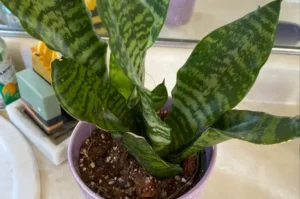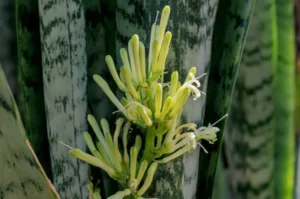Snake plants (Sansevieria), also known as mother-in-law’s tongue, are popular houseplants thanks to their low maintenance and air-purifying qualities. If you’re planning to grow or repot a snake plant, you might wonder: do snake plants have shallow roots? Understanding their root system is essential for choosing the right pot, watering habits, and ensuring healthy growth.
In this article, we’ll explore the nature of snake plant roots, how deep they grow, and how to care for them properly.
Understanding Snake Plant Root Systems
Snake plants have rhizome-based root systems. Rhizomes are horizontal stems that grow underground and store energy, allowing the plant to spread and reproduce. From these rhizomes, roots and leaves emerge.
Unlike many other houseplants, snake plants do not grow deep roots. Instead, their roots tend to stay near the surface, forming a shallow and wide network.
Key Characteristics of Snake Plant Roots:
- Shallow but strong: Roots don’t grow deep, but they are tough and firm.
- Rhizome-based growth: Rhizomes spread sideways, creating new shoots.
- Compact root ball: The roots stay close together and can become root-bound.
Do Snake Plants Like Shallow Pots?
Yes, because of their shallow roots, snake plants prefer wide and shallow pots. Deep pots are not necessary and may even lead to overwatering problems, as excess soil retains more moisture at the bottom.
Best Pot Characteristics:
- Shallow depth (4–6 inches for small to medium plants)
- Good drainage holes
- Sturdy material (roots can crack weak plastic pots)
Terracotta pots are especially good because they allow the soil to dry out faster, preventing root rot.
How Snake Plant Roots Affect Growth
Though the roots are shallow, they are powerful. In tight containers, they can:
- Crack pots
- Push the plant upwards
- Become root-bound, which limits further growth
When root-bound, the snake plant might still survive, but it won’t thrive or grow new shoots. Repotting every 2–3 years is a good practice to refresh the soil and give the roots space.
How to Check If Your Snake Plant Is Root-Bound
If your snake plant shows these signs, its shallow roots may be overcrowded:
- Water runs straight through the pot
- Roots coming out of the drainage holes
- Pot bulging or cracking
- Slow or no new growth
To fix this, gently remove the plant from the pot, check the root ball, and repot it in a slightly wider container.
How to Care for Snake Plant Roots
Proper care of the roots ensures long-term plant health.
1. Use Well-Draining Soil
A cactus or succulent mix works well. You can also make your own with:
- 2 parts potting soil
- 1 part perlite or sand
- 1 part coco coir or peat
2. Water Sparingly
Overwatering is the number one killer of snake plants. Since the roots are shallow and absorb water quickly, water only when the soil is completely dry.
3. Avoid Deep Planting
Keep the root ball near the top of the pot. Planting it too deep can cause root suffocation.
Entities to Know Related to Snake Plants
- Sansevieria trifasciata – Most common snake plant species
- Rhizome – Underground horizontal stem
- Root-bound – When roots fill the pot completely
- Terracotta pot – Ideal pot type for drainage
- Perlite – Lightweight soil amendment to improve drainage
- Overwatering – The Main cause of root rot
Frequently Asked Questions (FAQs)
Can shallow roots support a tall snake plant?
Yes, the roots are strong enough to support tall leaves, but the plant may topple if the pot is too small or light. Use a wide and heavy pot to add stability.
Do snake plant roots grow out of the pot?
Yes, when the plant becomes root-bound, you might see roots coming out of the drainage holes or even pushing the plant upward out of the pot.
Is it bad if my snake plant becomes root-bound?
It’s not immediately harmful, but a severely root-bound plant may stop growing and struggle to absorb water and nutrients. It’s best to repot it when needed.
Conclusion
So, do snake plants have shallow roots? Yes, they do. Their roots don’t go deep but spread wide through a rhizome system. These roots are strong and can handle a lot, but they need proper care to keep your snake plant healthy and thriving. Always use shallow, well-drained pots, avoid overwatering, and repot as needed to give the roots room to breathe.
Understanding the shallow root system of snake plants is the first step to mastering their care. With the right attention, your snake plant can live for many years and add beauty and clean air to your home.






